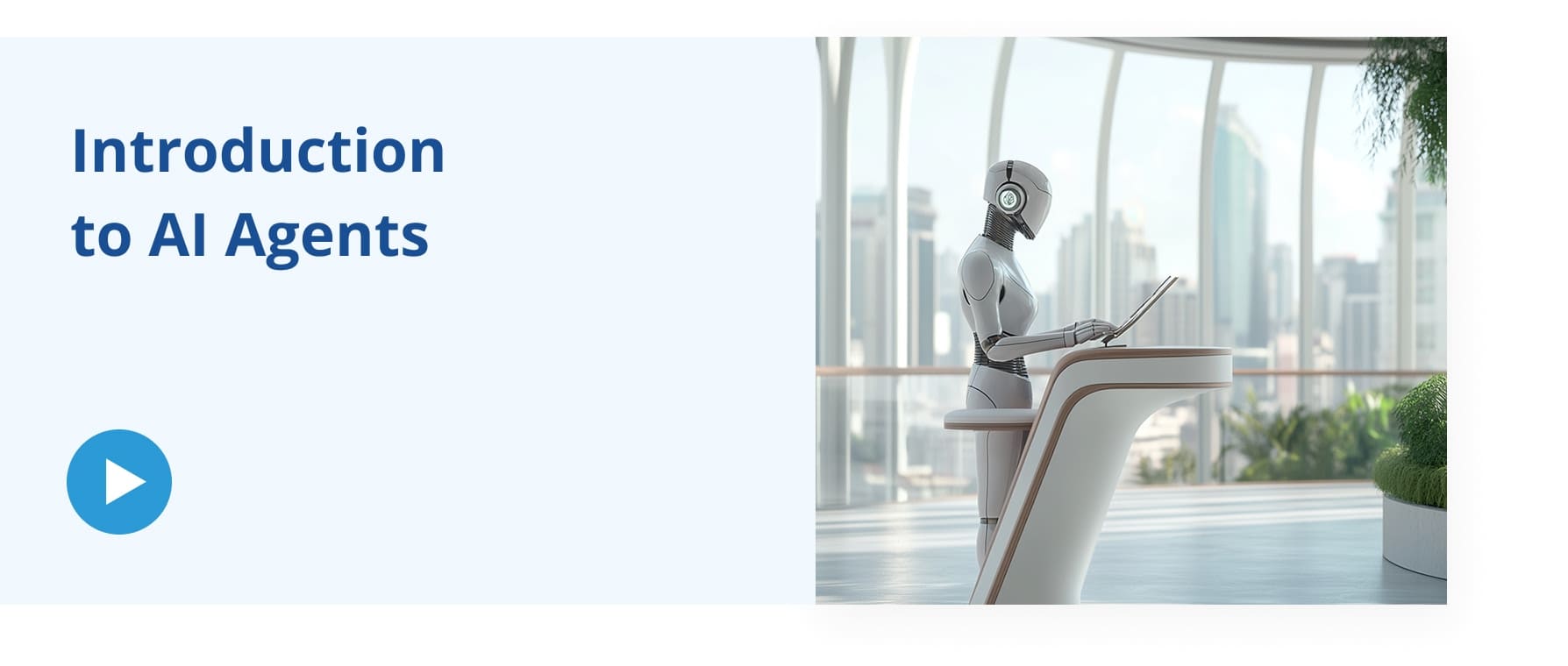- en
- de

Hardly a week passes without news headlines presenting another technology adoption in travel, and the pace of these advancements is stunning. Long gone are the days when we had to call our travel agents by phone or meet them in office to arrange a trip for us. Now we have online booking engine software at our services, while travel experts start questioning the viability of the metasearch model (we hardly have had enough time to get used to it) against the backdrop of AI agents gaining more prominence in online bookings, personalized recommendations, and trip planning.
AI in tourism is in hot demand as it can significantly contribute to customer satisfaction in travel and tourism. Among other things, it can also be implemented into yield management software that often comes with dynamic pricing tools for flexible pricing to increase profits wherever possible.
It’s really easy to get lost in all these travel technology trends 2025 and technology manifestations. Just look at this list!

Feeling dizzy as you cannot decide where to start? Or maybe you want them all? One thing is crystal clear — digital transformation is no longer a nice-to-have — it’s a must-have. Still, as we operate within the framework of limited resources, time, and budget (however much money you have, it still has limits), how can one navigate the journey towards digital transformation for tour operators? How do you ensure your investment truly delivers? Drawing on our 20+ years of experience in advising travel businesses, we are going to help you make a smart choice, particularly if you are a DMC or a tour operator. Read on to scrutinize the optimal strategic approach to technology adoption in travel.
Real-world examples that we witness throughout our travel software projects illustrate that our human nature often plays tricks even with the smartest business decision-makers. When it comes to DMC automation or digital transformation for tour operators, our clients may have difficulties with setting priorities. “We want to have EVERYTHING!” is what we commonly hear.
This attitude is a fruitful ground for several traps:
Over-investment in numerous features without a clear roadmap is a recipe for disaster. We invite you to study how you can approach technology adoption in travel in a smarter and cost-effective way.

Want to prevent money waste on tools and features you won't need? Let us help you in setting priorities.
Drawing on our experience in the travel tech industry, we identified five key principles any tour operator or DMC should take great care of if they want to beat the competition asap while saving some money for true success.

The technological landscape is changing as you read this sentence. The active life span of each core technology is approximately 5 years, then it is either depreciated and left on the roadside or goes through the process of reevaluation and upgrades. Yet, nobody knows how the travel ecosystem will look even in a year or two, because there is always a chance that all our ways of doing business will undergo drastic changes due to the rapid expansion of AI agents.

That is why we promote a fast launch of the most critical functionality among our clients because launching within one month is much wiser than having a lot of ideas and launching in two years. Do not try to implement everything everywhere all at once. Categorize what will bring the most value for you at the moment — and deliver it. Break down the entire vision of your ideal travel solution into smaller, reasonable phases. After each round of implementation, evaluate the latest tech trends and decide where to go next. Thus, you will be able to test, adjust, and evolve on the go.
Recommended Digitalization Cycle
| Size | Launch Time |
| Small business (startup or small company ≤ 3M) | Within three months |
| Mid-sized business (≤ 10M) | Three to six months |
| Large businesses (over 10 M) | Three-month iterations within a one-year timeframe |
You are most likely familiar with the Pareto principle, stating that roughly 80% of results come from 20% of effort. Surprisingly, that works for software development too. Back in 2002, Jim Johnson found out in his research that you use only 20% of your functionality always or quite often, with the rest being mostly neglected. These findings stay relevant even today, translating into the statement that 80% of the impact comes from just 20% of digital initiatives.

Source: Jim Johnson, Chairman of The Standish Group, Keynote “ROI, It’s Your Job,” Third International Conference on Extreme Programming, Alghero, Italy, May 26–29, 2002.
Tour operators may waste money on unused tech instead of prioritizing core revenue-driving systems. Sometimes, they over-invest in CRM, chatbots, or social media integration, while overlooking features that can have a considerable impact on their profits such as booking engine optimizations, supplier integrations, or dynamic pricing in the travel industry. In addition, our practice demonstrates that some even try to reinvent the wheel and opt for custom development, though only a few companies nowadays truly need it.
How to choose the right features? There is no universal answer to that question, because your business is unique, with your own marketing capabilities, varying markets, and your particular level of digital maturity.
We suggest that you compile the exhaustive list of functionality that you feel can be of interest for your business cause, rank items in accordance with their business impact, and prioritize your development investments to what can bring the most immediate revenue boost (e.g., via direct booking enhancements, automated upselling, or smart contract management). When ranking, answer the following questions:
In the end, you will have something like that to guide you further.

Remember that sometimes developers spend too much time on minor things, while the same time and money could be spent on more significant results to boost your business to new heights. Our general recommendation is to move fast and deliver what is really worth the effort!
Every travel company has its own level of digitalization and business maturity. Hence, one man’s meat is another man’s poison. Your software should not be just a set of features and modules — it should provide a boost to your business, and this business growth is measured by KPIs in travel.
Consider three straightforward parameters before hopping on the journey towards digital transformation for tour operators:
Success is not measured by the number of features/modules/releases (though it is important as well). It is defined by tangible business results your development efforts convert into.
A critical step here is to share your KPIs with your IT partners. Quite often, businesses keep this information to themselves, thinking that their tech partners should mind their own business and treating technology out of context. However, aligning your technology with KPIs ensures investments drive desired outcomes.
KPIs can be on different levels and with different parameters. A great way to handle this task is to utilize analytics in the travel industry and KPI visualization functionality so that you could clearly monitor your progress. When we see clear targets, our mind works towards finding opportunities to achieve them.

Technology is not a one-time investment — it is a life-long strategy, since the tech world is constantly changing. The most optimal share for software investments would be 1 to 5% of your turnover. If you invest less, there is a high chance you will be losing opportunities. With the further expansion of AI, this number may grow higher.
Technology adoption in travel normally proceeds with three major pricing models: one-time, regular payments, and booking-based. Very often, businesses tend to choose the one-time option when they pay only once, yet insisting on one-time payments can lead to outdated software and a lack of ongoing support and updates. However, pricing models involving booking fees or profit share can better align the interests of the technology provider with your growth, as your IT company will be interested in your growth as well.
One-Time Payment
Regular Payment (monthly / quarterly / annually)
Booking Fee
SMART CHOICE
When you approach digital transformation for tour operators and DMCs, it’s very easy to make the same mistake and add more systems, more logins, more processes, etc. thinking you can improve efficiency this way. But in reality, you will only make the situation worse, more complicated, and confusing. Think about every extra login, every extra click, every manual data transfer that will cost your employees time and money.
Ideally, every employee should use one system only that does everything: bookings, payments, CRM, reporting. We agree this may look like a highly-unlikely scenario due to the extreme versatility of software products in the travel ecosystem, that is why we suggest you make your software feel like one system with these simple components:
Remember the simple truth: the best technology is the one you don’t even notice — it just does it job.

A business is as fast as its slowest process. In the travel industry, speed and accuracy are key. Yet, many companies still rely on manual processes to exchange information with suppliers, agencies, and partners. Every manual entry is a risk — of errors, delays, and lost revenue.
Become a part of a global network and ensure your chosen technology can automatically interact with your partners and distribution channels via APIs and integrations like channel managers. This reduces errors and increases efficiency by automating data exchange.
A must-have of quality software is an open API for integrations.

Real-Life Example of Digital Transformation for Tour Operators and DMCs
Old Procedure
New Procedure
A hotel emails you new rates → your team manually updates your system.
Your system is integrated with a channel manager — prices update in real-time, reducing errors.
You create logins for travel agents → they log in, check availability, and manually book.
Agents book directly via API connectivity, reducing friction and improving conversion rates.
Your finance team manually reconciles invoices from suppliers.
Automated invoice reconciliation ensures data accuracy and saves hours of work.
Technology is only as good as the team who use it. Many companies focus on choosing the right tools but forget that people are the ones using them. Even the most sophisticated and automated systems will fail if employees don’t understand them or don’t see their value. Remember we talked earlier that an average user applies only 20% of technology? That may well be your case of technology adoption in travel if you neglect proper and ongoing training.
How substandard training leads to underutilization of features:
If you want to hit the target with your training sessions, make them mandatory, not optional, and use real-world scenarios, so employees understand how tech benefits them. Do not forget that learning is a continuous process because technology evolves, and arrange regular sessions to prevent employees from relapsing to old habits.
Digital transformation for tour operators and DMCs should not be just about software — include people as a vital asset into it.
While automation is beneficial, avoid over-automation to the point where customers cannot interact with humans when needed. A negative experience with purely automated support can lead to customer loss.
Technology should support but not replace the human element. Instead of fully replacing human interaction, use automation to support. Most humans still want to see a human face within their interactions with your services. While chatbots and automated emails are great, human touchpoints at critical moments can increase conversion and repeat rates.
As a matter of fact, it may be not so important WHAT travel companies require, but more about HOW they act and make choices on their development journey. Let’s have a look at two real-life cases from our development practice — one succeeding and one falling flat.
Good Strategy
Bad Strategy
Lean Development
Big Bang Approach
Small-scale DMC
Comprehensive packaging solution (flights, events, hotel stays)
The tech landscape is overloaded with software for businesses.
Let us analyze your needs and help in choosing the best approach to your digital journey.
Today’s technology goes far beyond just delivering services to your business — it is now embedded into our lifestyle. The better it fits you, the better results you are going to reap.
However, do not go crazy for adopting every available tool out there. Your tech stack should promote your growth, not slow you down. Here’s a round up of how to reach this goal smarter:
Remember — effective digitalization is NOT about the latest tools, but about strategic ALIGNMENT with your business goals.
Leave your request
We will contact you shortly
Thank you for your request!
We will get back to you as quickly as possible
Get latest insights
from our travel tech experts!
Join 200+ travel fellows! Get GP Solutions' latest articles straight to your inbox. Enter your email address below:
Thank You!